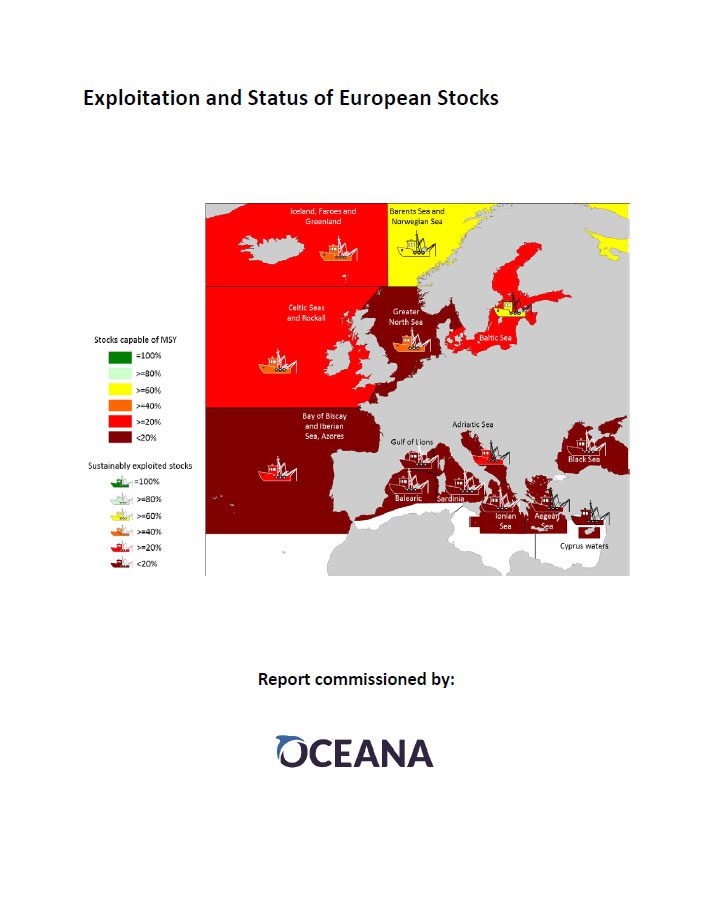Report | November 10, 2016
Exploitation and Status of European Stocks
Stock assessments are presented for 397 stocks in 14 European ecoregions, from the Barents Sea to the Black Sea. Surplus production modeling was used to estimate fisheries reference points in a maximum sustainable yield (MSY) framework. Fishing pressure and biomass were estimated from 2000 to the last year with available data (2013-2015). Results are presented by ecoregion and by main functional groups (benthic fish & invertebrates, large predators, pelagic plankton feeders). Cumulative biomass of exploited species was well below the level that can produce MSY in all ecoregions. Fishing pressure has decreased in some ecoregions but not in others. Barents Sea and Norwegian Sea have the highest percentage (> 60%) of sustainably exploited stocks that are capable of producing MSY and which thus fulfill the goals of the Common Fisheries Policy of the European Union. In contrast, in most ecoregions of the Mediterranean fewer than 20% of the stocks are exploited sustainably or are capable of producing MSY. Especially large predators have low biomass and were subject to strong overfishing in all ecoregions. In the last year with available data, 64% of the 397 stocks were subject to ongoing overfishing and 51% of the stocks were outside of safe biological limits, potentially suffering from impaired reproduction. Only 12% of the stocks fulfilled the requirement of the Common Fisheries Policy of Europe as being not subject to overexploitation and having a biomass above the level that can produce maximum sustainable yields.
Biomass in the ecoregions of the Mediterranean and Black Sea was on average less than half (44%) of the level that can produce MSY, whereas in the northern ecoregions (Barents Sea to Iberian coastal) biomass was about ¾ (73%) of that level. Rebuilding of biomass above the MSY level would require only a few years in most stocks, depending on the depletion level of the stocks and how far exploitation is reduced below the MSY-level during the rebuilding phase. For example, exploitation at half the MSY-level would rebuild most stocks in the northern ecoregions in 1-5 years whereas in the more depleted Mediterranean rebuilding of stocks would take 2-7 years.
Total catches across all stocks and regions were 8.8 million tonnes whereas the maximum sustainable yield (MSY) was estimated at 15.4 million tonnes. Because of trophic interactions it is not possible to achieve MSY simultaneously for all stocks, but after rebuilding of the stocks and assuming a precautionary target of 90% of MSY, substantial increases in catches could be possible. These potential increases differ widely between ecoregions, from 25% in the Baltic Sea to over 200% in some Mediterranean ecoregions. Across all stocks and ecoregions, potential increases in catch of over 50% could be possible.
Independent assessments of exploitation status were available for 93 (23%) of the examined stocks. A comparison of these exploitation estimates with the results of this study showed good agreement, with 82% of the stocks having the same classification of being overfished or sustainably exploited. For the stocks with different classifications, this study tended to underestimate exploitation.


